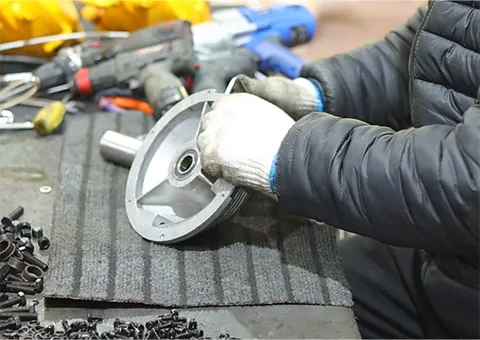Efficiency and Safety in Heavy Equipment Movement with Powered Machine Skates Technology
The Advantages and Applications of Powered Machine Skates
In various industries, the movement of heavy machinery and equipment is an ongoing challenge. Traditional lifting and moving methods can be labor-intensive, time-consuming, and sometimes dangerous. This is where powered machine skates come into play. These innovative devices are revolutionizing the way heavy loads are transported across different surfaces while ensuring safety and efficiency.
Powered machine skates, also known as motorized dollies or electric skates, are designed specifically for the easy transport of large and heavy items. They typically consist of a series of low-profile platforms equipped with electric motors and steering capabilities. This allows operators to move machinery and loads weighing several tons with minimal effort. The compact design of powered skates makes them suitable for use in tight spaces, further enhancing their versatility.
One of the primary advantages of powered machine skates is their ability to facilitate safer handling of heavy loads. Traditional methods, such as forklifts and cranes, require skilled operators and often present risks of accidents and injuries. In contrast, powered skates can be used by less experienced personnel, thereby reducing the likelihood of accidents. With built-in safety features like speed controls, braking systems, and emergency stop functions, powered skates provide a reliable alternative to manual handling methods.
Moreover, the efficiency of powered machine skates is noteworthy. They can quickly move substantial loads from one area to another, significantly reducing downtime. In industries like manufacturing, construction, and logistics, where time is money, this efficiency can lead to increased productivity and cost savings. Workers can focus on other critical tasks rather than being bogged down by the logistics of moving equipment.
powered machine skates

In terms of applications, powered machine skates have a wide range of uses. In manufacturing plants, they are essential for moving heavy machinery on production lines. In construction, these devices can transport materials and heavy equipment across job sites, reducing the need for multiple transport vehicles. In hospitals, powered skates can help in moving large medical equipment, ensuring that it is easily accessible while maintaining a sterile environment.
Additionally, powered machine skates offer significant advantages when it comes to flexibility. Many models are designed to handle various loads, from small machinery to larger industrial equipment. They can be equipped with different attachments to cater to specific needs, such as for lifting or stabilizing particular types of machinery. As a result, businesses can invest in a versatile tool that can adapt as their needs change over time.
The technology behind powered machine skates has continued to evolve. With advancements in battery life, weight capacity, and operational controls, modern skates can now offer more robust performance than ever before. Some models even feature remote control capabilities, allowing operators to maneuver heavy loads from a safe distance, further enhancing safety and reducing the need for manual engagement.
In conclusion, powered machine skates are transforming the landscape of heavy load transportation across various industries. Their ability to improve safety, enhance efficiency, and offer flexibility makes them an indispensable tool in today’s fast-paced work environments. As industries continue to seek innovative solutions for heavy machinery movement, powered machine skates are likely to play an even more significant role in optimizing operations and ensuring safety in the workplace.
-
The Ultimate Guide to Heavy Machinery Moving EquipmentNewsAug.04,2025
-
The Evolution of Large Equipment MoversNewsAug.04,2025
-
Maximizing Efficiency with PML Magnetic Lifters in Industrial OperationsNewsAug.04,2025
-
Choosing the Best Small Gantry CraneNewsAug.04,2025
-
Innovations in Permanent Lifting Magnet TechnologyNewsAug.04,2025
-
How to Maintain Your Adjustable Gantry Crane for LongevityNewsAug.04,2025
-
PML 6 Lifting Magnet Troubleshooting GuideNewsJul.25,2025
